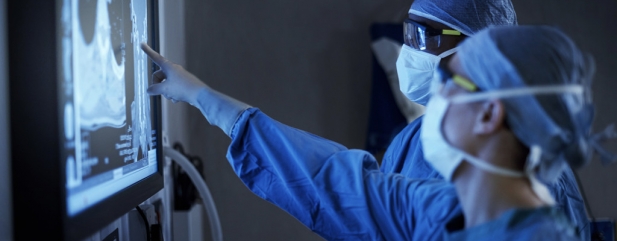Archived article
Please note that tax, investment, pension and ISA rules can change and the information and any views contained in this article may now be inaccurate.
Medica is a premium growth story

Teleradiology firm Medica (MGP) is expected to enjoy rapid growth thanks to a surge in demand and a lack of radiologists in the UK.
Medica helps to provide early diagnosis of various diseases through its consultant radiologists who interpret computerised tomography (CT) and magnetic resonance imaging (MRI) scans. If these scans identify diseases earlier, it can improve treatment options and outcomes.
Strong performance since IPO
Berenberg says earnings before interest, tax, depreciation and amortisation and earnings per share are expected to grow at a compound annual growth rate of 16% and 20% respectively between 2017 and 2020.
Medica has enjoyed a strong share price performance since its IPO on 21 March 2017 when it raised £121m to pay down borrowings. Since 22 March, the stock has rallied 16.9% to 219.2p.
The company currently trades on a forecast 29.8 times earnings per share in the year to 31 December 2018, but Berenberg analyst Charles Weston thinks this premium valuation is ‘justified’ in light of rapid growth.
The analyst projects 8% growth per annum in the volume of CT and MRI scans handled by the company, which will be supported by a deficit of radiologists in the UK.
There are 4.7 radiologists per 100,000 of the UK general population. This is materially below the Royal College of Radiologists’ target of 8 per 100,000, and is pushing up waiting lists.
Outsourcing trends and pricing power
One of the ways to tackle this issue is by outsourcing services. Weston says approximately 7% of CT/MRI scans are outsourced. Medica has a dominant position in the UK teleradiology market (50%) and this allows it to charge 5% to 10% more than its rivals.
The analyst also highlights that 80% of all clinical decisions are underpinned by imaging and new clinical guidelines for quicker diagnosis of diseases such as cancer and dementia call for scans.
Medica provides services to over 100 NHS trusts, as well as private hospitals and diagnostics imaging firms, and intends to expand its services to tackles conditions such as strokes.
There are risks associated with the business. Medica needs to ensure it continues to recruit radiologists to meet demand as otherwise growth could be constrained.
We were initially cautious on Medica’s dependence on the NHS and Weston also highlights the NHS exposure as a reason for some caution as 99% of sales are derived from NHS Trusts.
Despite this nagging concern we are convinced high demand and low supply will drive Medica forward.
Important information:
These articles are provided by Shares magazine which is published by AJ Bell Media, a part of AJ Bell. Shares is not written by AJ Bell.
Shares is provided for your general information and use and is not a personal recommendation to invest. It is not intended to be relied upon by you in making or not making any investment decisions. The investments referred to in these articles will not be suitable for all investors. If in doubt please seek appropriate independent financial advice.
Investors acting on the information in these articles do so at their own risk and AJ Bell Media and its staff do not accept liability for losses suffered by investors as a result of their investment decisions.

 magazine
magazine









